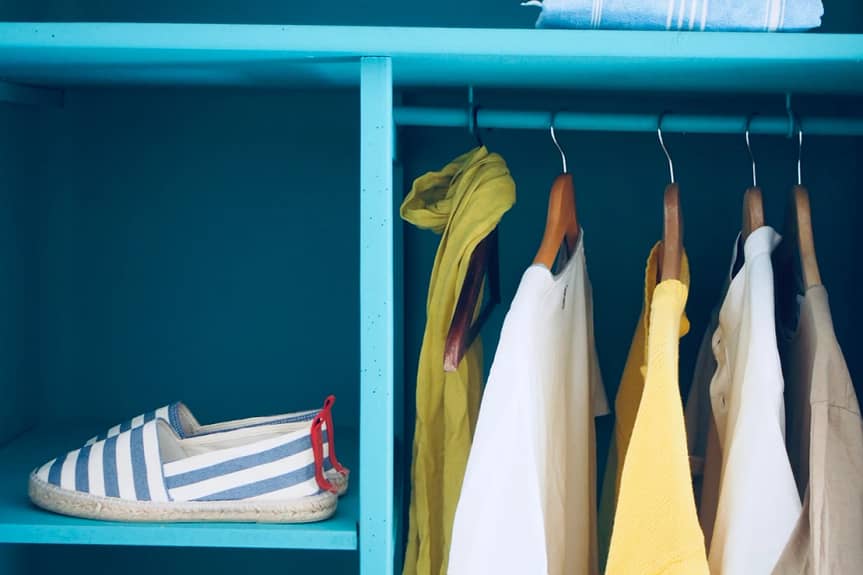Look at that mess. Really, get up, and go look at the mess. You’ve been trying to avoid it. Hiding it away behind closet doors, cabinets, and under the bed, I know all the tricks. It’s time to confront the problem head-on though, you’ve put it off for too long and it’s only going to get worse. Why? Because you keep putting it off because it feels too overwhelming.
That’s okay though, those feelings are only natural, but hey, listen, with these few fundamentals I’m about to teach you, you’ll have all the key pieces to creating an organized system that will help relieve you from the stresses of that monstrous mess and chaos.
One system at a time
So you want to get organized, but you don’t even know where to start, and feel like it all needs to get done, right? Building systems into the way you do things will save your life or, at the very least, your sanity. So with organizing, as with plenty of other areas of life, keep it simple, and focus on one area at a time.
Everything doesn’t need to be done all at once, and it’s okay to start small. Just break it into manageable bits. For instance, commit to just focusing on one cabinet in the kitchen instead of thinking, “I’m going to organize the entire kitchen this weekend.” Do you feel how one of those is extremely daunting, while the other feels completely doable?
Along with that, don’t feel that it all has to be done in a weekend, or a month. The cabinet for instance, just focus on that for 2-3 weeks and get fit right. I’ll loop back around and explain more about setting up and analyzing a proper system at the end of this article.
Colors are your best friend
One great use case for color coding is when you’re organizing the kitchen. Color coding shelves and storage compartments allow you to make sure everything gets back to its specific place even when someone else, like a cleaning lady, or guest has to put things away. It’s very simple to understand that a green label on the outside of the drawer matches up with the green label on the handle of the pan, then the red label right next to it matches up with the red label (and likely crime scene outline) inside the drawer.
One great use case for color coding is when you’re organizing the kitchen. Color coding shelves and storage compartments allows you to make sure everything gets back to its specific place even when someone else, like a cleaning lady, or guest has to put things away. It’s very simple to understand that a green label on the outside of the drawer matches up with the green label on the handle of the pan, then the red label right next to it matches up with the red label (and likely crime scene outline) inside the drawer.
This is a foolproof way to keep things organized, accessible, and in their rightful place at all times.
Don’t let your items be anti-social, Group them!
Just like people in groups of friends, things should be put with similar or complementary things. Grouping can be your biggest friend when organizing and systematizing. Utilize it.
Keeping similar things together allows you to always know where a stored item might be. It drives us all crazy to have to search through bins of random stuff, pulling out knots of wires, and random batteries, or sharp objects waiting to impale you. We want to avoid this at all costs.
If it’s tough to get to if you struggle even just for more than 5 seconds, then it’s a poor experience and that item is not accessible. s decorations, but specifically tree stuff. Inside are the cells. So by creating a customized divider you would divide the bin into 4 sections, left and right, top and bottom. In the bottom left are icicle lights and the top left are white lights. See what we did there, we further grouped items into the left side now being “lights.” Next, we use the bottom right to store the star for the top of the tree. Then in the top right, we’ll segment that compartment further to properly fit the tree ornaments. What we might even do is make a custom shaped insert out of foam so each ornament has a very specific place and is color-coded to its specific spot.
This way, next time Christmas comes around the tree bin comes out and goes right by the tree everything comes out easily and goes back in with a breeze, and is put back exactly where it came from.
A is always for accessibility
If it’s tough to get to, if you struggle even just for more than 5 seconds, then it’s a poor experience and that item is not accessible.
A good rule of thumb is, “if you don’t use it daily or 5-6 days a week then hide it,” and when things are hidden, take the stuff that is seldom used and segment further by hiding it from the items you use more frequently. Put items you rarely use further back in a cabinet or closet, this is okay because the one time you use it you’ll know right where it is, bending down to reach for something once a month or year isn’t as big of a deal. However, when you use something every day, that reaching or bending over can, and will, take a toll. The goal is for it to feel like you’ve just received a light massage after you’ve accessed various items in your home.
If there is a handle or a special way to grab the item, make sure that when you put that thing away that the handle or griping feature is facing towards you so that you can grab it without having to reorient the item once removed from where it is stored.
If you have to stack items within a container, the best thing to do is to make removable sections that fit within the larger container so you can access other items further down without having to dig and mess up an elegantly organized container. Layer everything.
Less is better, most of the time
Minimalism is a hot word right now. Organizers, designers, and system thinkers are all hot on it. The thing is, It’s a philosophy that just works. When there is less clutter an environment, or product looks and feels better. It’s like giving a room space to breathe.
Constantly be working towards a minimalistic state. Ask yourself if you really need this new thing. Ask yourself the same question with things you have, then follow up with considering how much true value it brings to your DAILY life. Thinking in terms of your daily life will frame each item differently. If you love something, but it’s always in a closet and never gets used, it’s most likely not positively affecting your life that much.
Now, keep in mind, you can go too far with minimalism. Apple has done this a lot, they keep removing buttons and features in an effort for more elegant looking design. Although it may look better, that doesn’t necessarily mean it functions better. We want a cross between optimal functionality and aesthetics. An extra button or two can make something work tremendously better which is worth it looking a little worse because the overall daily experience will be better.
Look to remove as much from your countertops as possible, but leave items that are accessed daily that would take an extra 10-30 seconds to grab if they were in a drawer or cabinet. If need design and build a special container/holder for them to live in.
You are a mad scientist, but experimenting will bring back your sanity
Hypothesize. Create an experiment. Test. Evaluate. Repeat.
A great system isn’t made in a day, it’s tested, evaluated, and refined through experimentation over a period of time.
It’s okay if your system for organization doesn’t work at first. You did the first, hardest step and did something about your clutter. Just identify what isn’t working, come up with a possible solution and make the tweaks one at a time to the system until you’ve finally got something that works perfectly for you. Embrace the mistakes because oftentimes they lead you to a creative new solution you wouldn’t have thought of on your own.
A big, big, big thing to keep in mind is to focus on one system or experiment at a time. Two at most, but it can push your focus. Any more than that and you’ll likely give up on all of them. Persisting through the difficult bits, and doing your best to not get frustrated is the key to get your organization system just right so you can feel that sweet sweet daily relief and satisfaction.
It’s time to take action
Reading this article was a waste of your time if you don’t do something with what you’ve just gulped down into your brain tummy! It’s time for you to pick one system or way of doing something in your house, then come up with a plan to improve it. Maybe organize your closet by color, or get the garage in order. Another possibility is to come up with a simple way to clean dishes more effectively. Whatever you choose, apply just one principle you learned from this article.
But hey, if you don’t have the time or energy to do it yourself, you can always check out one of our packages and hire us to do a full analysis of your home, then help you minimize, deck your home out in home automation, or create custom systems and products for you.
Whatever you choose, we just hope your life gets better and that you’re able to reduce a bit of stress and/or anxiety from your life.


